 Click
for Site Directory
Click
for Site Directory
Hanna Reitsch - A German WWII test pilot who has been called "The Century’s Greatest Pilot"
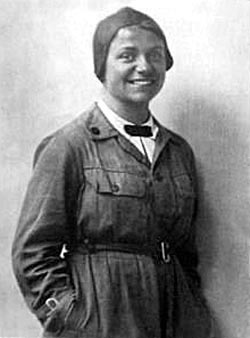
Born 29th March 1912 and left school in 1931, attended Kolonial Frauenschule, Rendsberg where she did her first gliding course Grunau.
In 1932 she obtained her gliding and powered flying licences. Achieved an endurance record for women and began medical studies at Berlin and Kiel.
In 1933 she attained an new altitude record in the Granau Baby glider but almost lost her life in the descent as she had flown into a dangerous storm cloud. She went on to become an instructor in gliding at the Horngerb in Swabia.
In 1934 she went on expeditions to South America and Finland. She doubled for a film star in the film Rivalen der Luft. She was invited by professor Walter Georgi to give up medical studies and become a test pilot at the Darstadt Gliding Insititute.
The Deutsche Forschungsanstalt fur Segelflug (DFS) was considered the top research establishment for motorless flight not just in Germany but throughout the world.
In 1935 she carried out tests on Kranich and See Alder gliders designed by Hans Jacobs. It was at this time that Germany began to produce 200 aircraft per month notably the Messerschmitt fighters,Junkers, Dornier and Heinkel bombers. The infamous Stuka dive-bombers were being rapidly developed.
In 1936 she was doing Dive-brake tests in gliders and took part in the famous Berlin Olympics.
She was made a Flugakapitan (Flight Captain) in 1937 which was an honour only given to men, and she had not become one by traditional means but by the work she had done to carry out test flights on dive brakes thus making the aviation world safer for all.
1937 saw her seconded to the Rechlin where she tested dive brakes on Stukas, and a year later flew a helicopter.
At the outbreak of war saw Hanna Reitsch carrying out tests on troop carrying gliders and she was given the task of attempting to se how German aircraft performed on collision with a barrage balloon cable.
1940 saw the British Balloon Barrage notch up a series of fatalities on the German pilots. The barrage balloon was deadly in that it could be flow at heights of 10,000 feet and the cable on which it was attached was very hard to spot when flying. The barrage balloon was a brilliantly simple idea and it was thought that there might be a way to use a simple technology to cut through the cables.
Hans Jacobs designed a cutting device to be fitted to the wind tips of bombers using an arrow shaped fender that it was hoped would cause the cable to slide along the fender in front of the wing and then come up against the wing tip where a special cutting edge had been placed. The fender would act as a deflector and also a protector of the pilot, cockpit, wings and engines.
This is a Heinkel Bomber captured by the British showing the added fender stretching across the wingtips.
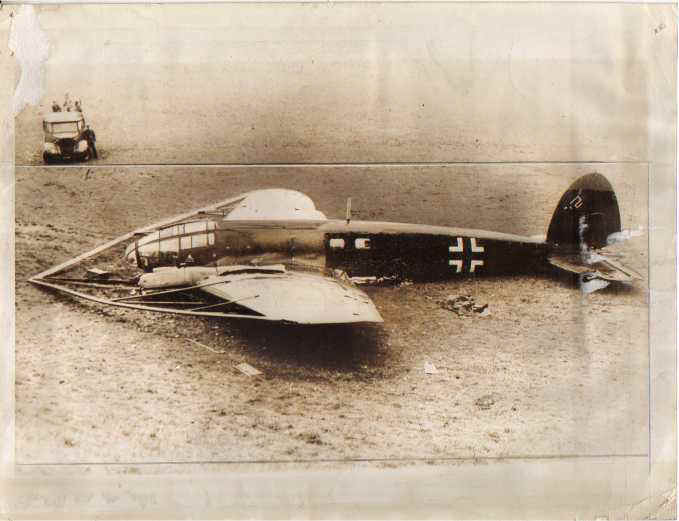
It is easy to see the principle of the fender idea but it was weight that was to be its literal downfall as in this case above where the bomber had been unable to remain in flight
Hanna started with a cable of 2.7 mm in diameter and slowly worked up to 8.9 mm thick cables.
On her first trial she flew straight into the glinting cable and instruments on board the aircraft recorded the impact, allowing adjustments to be made so that each thicker cable type could be dealt with effectively. She suddenly developed scarlet fever and was hospitalised for 3 months. On her recovery the preliminary trials had been completed. The fender was abandoned as the extra weight was sufficient to make the aircraft unsafe if it lost an engine as then it would not have enough power to lift the aircraft correctly. The final tests were an expensive drain. Each one needed a new balloon and when balloons were free floating they quickly became a hazard to pilots and electricity power lines.
Ernst Udet arrived at the airfield with Hitler just as Hanna was about to attack a balloon cable from a genuine British Balloon captured by the Germans after it had drifted from it base.
She had to fly very low into the 5.6 mm cable in her twin-engined Dornier. She hit the cable and the strands exploded shaving off the lower edge of two propeller blades the result was the engine tore loose and she began to lose height rapidly from the unbalanced power of the aircraft. She landed safely and was later given by Goering in March 1941 the Iron Cross, Second Class and a military gold medal in recognition of her aviation services in wartime. the first such award to a woman and a civilian.
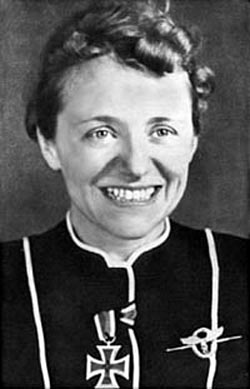
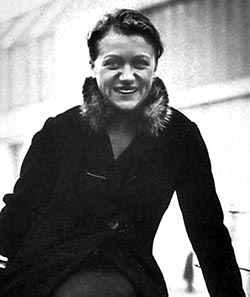
In 1942 she was given the Iron Cross First Class after flying the Me 163 and sustaining serious injuries.
In 1945 she apparently spent 3 day's in Hitler's bunker before being arrested by the Americans.
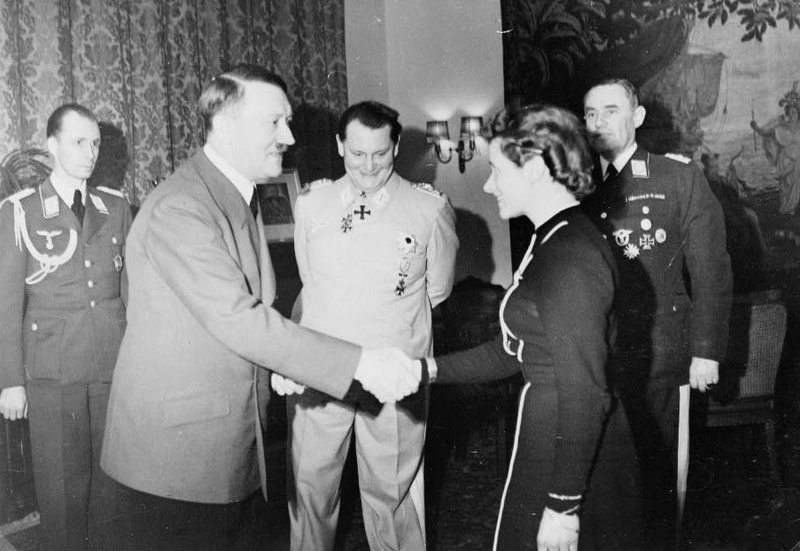
Hitler Congratulating the Flier on her work for the Fatherland
Her contribution to the German war effort was quite amazing. Had she been on the Allied side then who knows what development she might have been involved in!
For a further study of her wartime exploits read "Flying for the Fatherland, The Century's Greatest Pilot" by Judy Lomax.